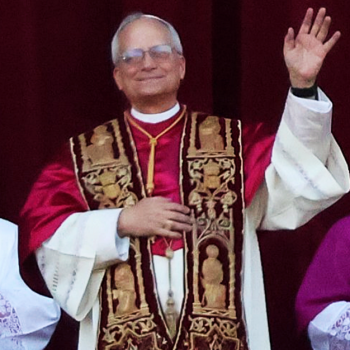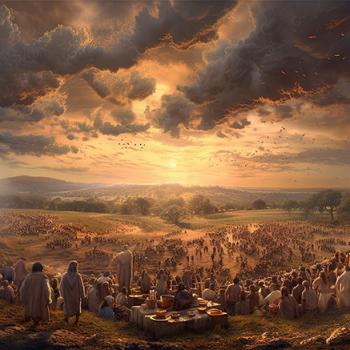
The following on the peacemaking Jesus is an excerpt from my book, Breaking Bad Faith. Full footnote citations for quotes are in the book’s end notes.
Peace According to the Romans
In ancient times, the concept of bringing peace to the world had little to do with making peace with your enemy or establishing democracy. Rather, it was about conquering your enemies and ruling over them with an iron hand. Once your enemy was conquered, peace was maintained by quashing uprisings, keeping order in society (not equality), and punishing the disobedient in a way that put fear in people so they would not try to do the same. It was a peace created through military and political dominance, extraction of resources through taxes, and fear of those in charge. The Romans had this down to a science.
“The Pax Romana (Roman Peace) was a period of relative peace and stability across the Roman Empire which lasted for over 200 years, beginning with the reign of Augustus (27 BCE–14 CE). The aim of Augustus and his successors was to guarantee law, order, and security within the empire, even if this meant separating it from the rest of the world and defending, or even expanding, its borders through military intervention and conquest.” (Wasson, “Pax Romana,” World History)
This peace came at a high price. The Roman historian Tacitus quoted a leader of Briton named Calgacus, who commented on the conquest of Britain:
“They [the Romans] are unique in being as violently tempted to attack the poor as the wealthy. Robbery, butchery, rapine [plunder], the liars call Empire; they create desolation and call it peace.” (Wasson)
New Testament scholar Hal Taussig explains:
“Romans practiced both random and intentional violence against populations they had conquered, killing tens of thousands by crucifixion. …By the time crucifixion was a staple of the Roman Empire, its justice system had employed strangling, stoning, burning and even boiling in oil as methods of torture and execution. But crucifixion sent a more lingering message.” (Taussig, “How Romans Used Crucifixion—Including Jesus’—as a Political Weapon,” Newsweek)
Crucifixion Used to Keep the Peace
Crucifixion became the most famous punishment the Romans carried out. It was used on slaves, pirates, and anyone deemed an enemy of the state. Jesus would have been crucified by the Romans for sedition. The two “thieves” crucified with him were more likely “insurgents,” as the Greek word can also mean that.
The main purpose of crucifixion was not to exact justice but to dissuade the public from carrying out similar wrongdoing. With crucifixion, death could take several days, and the victims were sometimes left on crosses after dying to further warn potential criminals. “Crucifixion was usually intended to provide a death that was particularly slow, painful, gruesome, humiliating, and public…” (“Crucifixion,” Wikipedia). This torture was on display for all to see, as the location of crucifixions were commonly near public thoroughfares. Crucifixion was the ultimate deterrent to crimes of the state, particularly rebellions or other forms of treasonous acts that challenged the authority of Rome.
Through the Roman emperor Augustus (the adopted son of Julius Caesar), Rome conquered new lands and supposedly brought peace to the known world. Augustus was also deemed a keeper of the peace in places like Palestine and Jerusalem, which Rome had conquered over thirty years before his reign. Again, an iron-handed rule with deterrents like crucifixion and stoning were the tools used to keep peace.
“Augustus was hailed as a savior, lord, King of Kings, prince of peace, son of God, the Pontifex Maximus or High Priest of Rome, who brought gospels and glad tidings to the people of Rome” (Sprinkle, “Fight”). In the Roman mind, the good news was that law and order in the Empire was won and maintained by the use of violence and political weapons. [In the mind of Second Temple Judaism, the good news was successful violent rebellion against Rome and using sacred violence, eye-for-eye retribution, and capital punishment to weed out the disobedient].
The Jesus Movement Introduces True Peace
Then along came Jesus and his first followers who preached a vastly different way of peace. A way that didn’t conquer and punish their enemies with violent retribution but rather forgave and loved their enemies with good will. A way that stood up to injustice with calls for equality and kindness for all, regardless of religious, ethnic, moral, or class standing.
To say “Jesus is Lord” or the “Son of God” was not to acclaim some mandatory, theological acceptance of the deity of Christ, but rather to proclaim that the peaceable Way of Jesus was superior to the conquering ways of the world, whether it was from the Roman Empire or Israel’s God of Joshua. The road to true peace was not through violent subjection but egalitarian, non-violent love for humankind.
Sometimes people think of the teachings of Jesus as not particularly outstanding compared to our own democratic society’s ways of equality, but we forget that in the ancient Roman world conquest context and the Jewish sacrificial religious context—both of which were extremely violent, cruel, and unforgiving—Jesus’ teachings were as radical as they were magnanimous.
We also often think that the ways of “the world” that some Bible teachers rail against are mostly things like sexual immorality, hedonistic culture, and lack of religious piety and commitment to the organized church. Although Jesus confronted things like casual divorce and the Jewish definition of adultery, he had nothing to say about sexual taboos, prostitution (except that prostitutes who accepted his good news were more righteous than the religious leaders), or homosexuality. He was considered a glutton and drunkard because he hung out with wine drinkers, welcomed invites from the rich and poor alike, and was the most critical of those entrenched in organized, legalistic religion. He primarily opposed being merciless, unforgiving, retaliatory, retributive, violent, greedy, and using religion or politics to justify power over people.
Reclaiming the Path of Peace
Jesus was a progressive, universalistic Jew who chose the peaceable narratives of the Bible over the retributive ones. He was not a religious and politically conservative Christian who believed in the inerrancy of the scriptures. He taught a “religion of the heart” (thus women street workers with good hearts can surpass male priests with bad ones) that cares most for the “least of these” in society. He did not teach a religion that one wears on their sleeve in the form of churchgoing, doctrine-believing, religious-code-obeying followers. The “world” that Jesus confronted was an uncaring, brutal, and violent world. The way of the world in that day was violence and unequal treatment of marginalized or broken people by both religious and imperialistic institutions. Opposing this doctrine was about introducing true peace that sought out egalitarian communities of care, love, and restoration, rather than institutions of power, authority, and retribution.
Garreth Higgins says it well: “Jesus comes into a cultural, historical nexus where on the one hand the prevailing empire, Rome, thought domination and conquest through violent retribution and punishment of your enemies is the way, and on the other, the prevailing religion thought that violent rebellion and overthrow of that empire was the way, or least colluding with that violent empire to keep your religious power…so he tells them you’re both wrong…of course he was opposed and eventually crucified.” (J.E.S.U.S.A., the film)
Later on, Jesus’ earliest followers actively applied these peaceable teachings for two centuries after his death. They resisted the legalistic, uncaring, inequitable religion of second Temple Judaism by forming communities of compassion that welcomed the marginalized, women, gentiles, and slaves as equals. As Apostle Paul put it, “in Christ, there is no such thing as Jew or Gentile, slave or free, or male and female” (Galatians 3:28). Jesus’ followers also practiced benevolence and caring for the poor, even the Roman poor, as the Roman emperor Julian acknowledged in the fourth century. Historian Rodney Stark says they “created a miniature welfare state in an empire which for the most part lacked social services” (Stark, “Cities of God”). Historians believe this is the reason for the movement’s early growth. It wasn’t the promise of a heavenly afterlife over an eternal demise, but rather the attraction of a compassionate and equitable community over the reigning powers of Empire in the here and now, whether it was the empire of second Temple Judaism or the conquering Romans.
The later disciples not only opposed the power of Rome but actively resisted it. They “successfully resisted the Roman Empire. These peoples’ [Jesus followers] resistance against Rome often kept violence at bay and gave their people courage and an experience of safety. A key dimension of their resistance to empire was invoking God’s compassionate and strange empire, or kingdom, as later translators have it, in contrast to Rome’s cruel and dominating one. These various groups made fun of Roman military power and mocked Rome’s claim of divine power, even though they themselves had almost no power. The Empire of God challenged the Empire of Rome. Caesar Augustus as Lord conflicted with Jesus Anointed as Lord” (Vearnecombe, “After Jesus Before Christianity”)…
When we break bad faith, we must reject the caricature of Christ that ignores or minimizes this radical way of life and redefines what matters most, making it into modern evangelical doctrines and political positions. We must expose how Jesus’ teachings and revolutionary ideas have been sidelined to irrelevance by cultural warriors and how much we really need those ideas to improve the world. Then we must reclaim the path of peace.
************
Michael Camp tends the Spiritual Brewpub, and its Podcast, which both help disillusioned or post-evangelicals uncover historical facts and insights that help them deconstruct, rethink, and rebuild a more authentic faith or spirituality. He is the author of Breaking Bad Faith: Exposing Myth and Violence in Popular Theology to Recover the Path of Peace. To get specific help deconstructing conservative Christianity and rebuilding healthy faith, see Michael’s Religious Deconstruction Workshop.

















